Deep within the world’s most pristine forests lie extraordinary hideaways where the modern world fades into background noise, replaced by the symphony of nature. These remote sanctuaries offer rare opportunities to disconnect from digital distractions and reconnect with the natural rhythms of life among ancient trees, exotic wildlife, and rushing rivers. For travelers seeking authentic wilderness experiences without sacrificing comfort, these jungle retreats provide the perfect balance of adventure and tranquility.
Here is a list of the most remarkable jungle accommodations around the world where you can truly escape civilization while still enjoying thoughtful comforts and unforgettable experiences.
Pacuare Lodge, Costa Rica

Accessible only by white water rafting down the Pacuare River or an exhilarating rainforest hike, this extraordinary lodge sits within 25,000 acres of protected Costa Rican jungle. The elegant palm-thatched bungalows feature private terraces with river views, canopy beds, and spring-fed pools, all built using sustainable timber without cutting a single primary forest tree during construction.
With no electricity in the rooms (illumination comes from lanterns and candles), solar-heated water, and farm-to-table dining featuring ingredients from the on-site organic garden, guests experience luxurious sustainability while falling asleep to the sounds of flowing water and waking to howler monkeys.
Diphlu River Lodge, India

Perched on the edge of Kaziranga National Park in Assam, this intimate retreat offers privileged access to one of India’s most extraordinary wildlife reserves, home to two-thirds of the world’s one-horned rhinoceros population. The eight raised cottages feature handwoven fabrics, local artwork, and private viewing decks overlooking the Diphlu River, where elephants often come to drink.
The lodge operates entirely on solar power and harvests rainwater. It employs local Assamese staff who share their deep knowledge of the surrounding jungle, creating an authentic experience that supports both the environment and indigenous communities.
Like Travel Pug’s content? Follow us on MSN.
Cristalino Lodge, Brazil
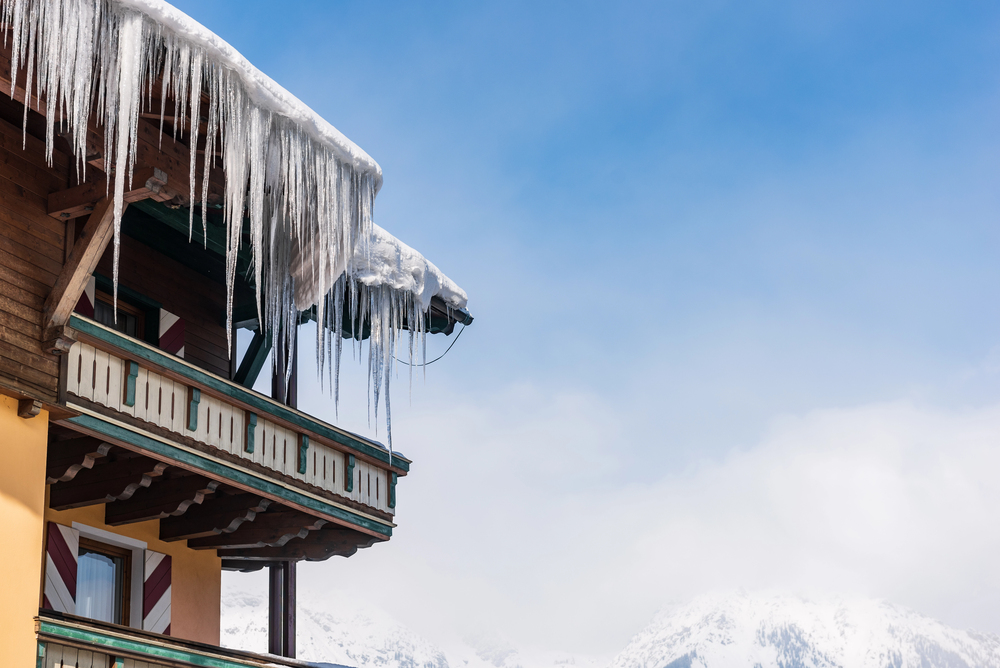
Hidden within a 28,000-acre private rainforest reserve in the southern Amazon, Cristalino can only be reached by a combination of light aircraft and boat journeys along the Cristalino River. The eight bungalows feature screened walls that allow jungle breezes while keeping insects at bay, with solar-powered electricity limited to essential needs and carefully designed natural ventilation eliminating the need for air conditioning.
Two 50-foot observation towers rise above the forest canopy, offering unparalleled views of pristine jungle stretching to the horizon and opportunities to spot rare harpy eagles, howler monkeys, and hundreds of bird species found nowhere else on earth.
Sacha Lodge, Ecuador
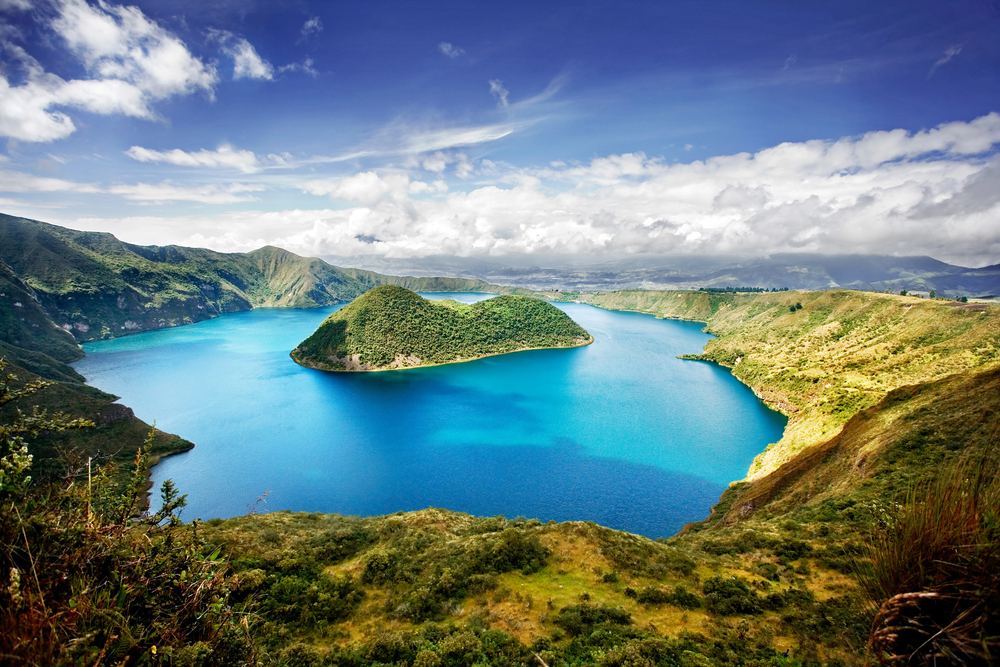
Nestled within a 5,000-acre private ecological reserve in the Ecuadorian Amazon, Sacha Lodge combines authentic jungle immersion with unexpected comforts. Reaching the property requires a flight to Coca, followed by a motorized canoe journey down the Napo River and a final trek through flooded forest pathways.
The 26 cabins constructed from natural materials feature private shaded terraces with hammocks, while a 940-foot-long canopy walkway suspended 94 feet above the forest floor offers perspective on life in the treetops. The lodge’s black water lake attracts caimans, giant otters, and countless birds, all observable from the safety of paddle canoes guided by native Kichwa guides.
Four Seasons Tented Camp Golden Triangle, Thailand

Perched at the convergence of Thailand, Laos, and Myanmar in the dense bamboo forests of the Golden Triangle, this extraordinary camp combines jungle seclusion with Four Seasons luxury. The 15 elevated tented accommodations feature handcrafted furniture, hardwood floors, and outdoor showers, all connected by bamboo walkways through the mist-shrouded forest.
The camp specializes in ethical elephant experiences with rescued animals. It offers guests opportunities to walk alongside these gentle giants through the jungle rather than riding them, followed by traditional Thai treatments in the open-air spa pavilions overlooking the Ruak River and Burma Mountains beyond.
Like Travel Pug’s content? Follow us on MSN.
Misool Eco Resort, Indonesia

Located on a private island in Raja Ampat’s remote archipelago, Misool sits within its 300,000-acre marine reserve surrounded by pristine jungle that reaches the ocean’s edge. The overwater bungalows and beachfront villas are built entirely from reclaimed tropical hardwoods salvaged from former fishing boats and abandoned structures, with designs that maximize natural ventilation.
Solar power provides limited electricity, while rainwater collection systems and advanced waste management ensure minimal environmental impact. The surrounding waters contain the world’s most biodiverse reefs, accessible directly from villa decks, while jungle trails lead to hidden caves featuring ancient rock art.
Inkaterra Reserva Amazonica, Peru
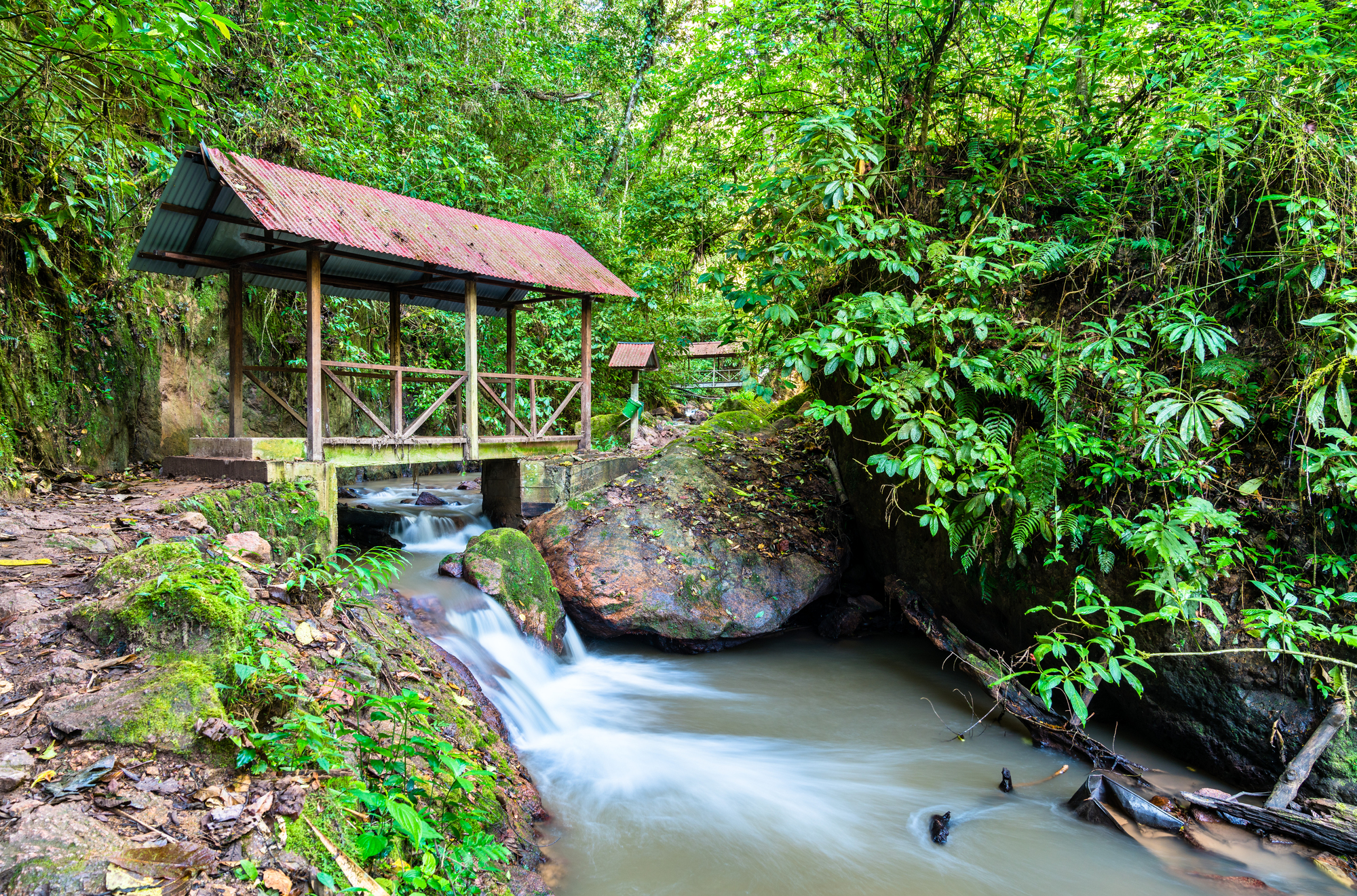
Situated beside the wildlife-rich Madre de Dios River in Peru’s southern Amazon, this pioneer in ecotourism offers 35 private thatched cabañas inspired by indigenous Ese’Eja architecture. The property operates without electric generators, uses solar lanterns for evening illumination, and focuses guests’ attention on natural rhythms and sounds.
A quarter-mile-long canopy walkway suspended 98 feet above the ground allows for exploration of rainforest life rarely seen from ground level. At the same time, excursions to Lake Sandoval offer opportunities to spot endangered giant river otters in one of their last strongholds.
Lapa Rios, Costa Rica
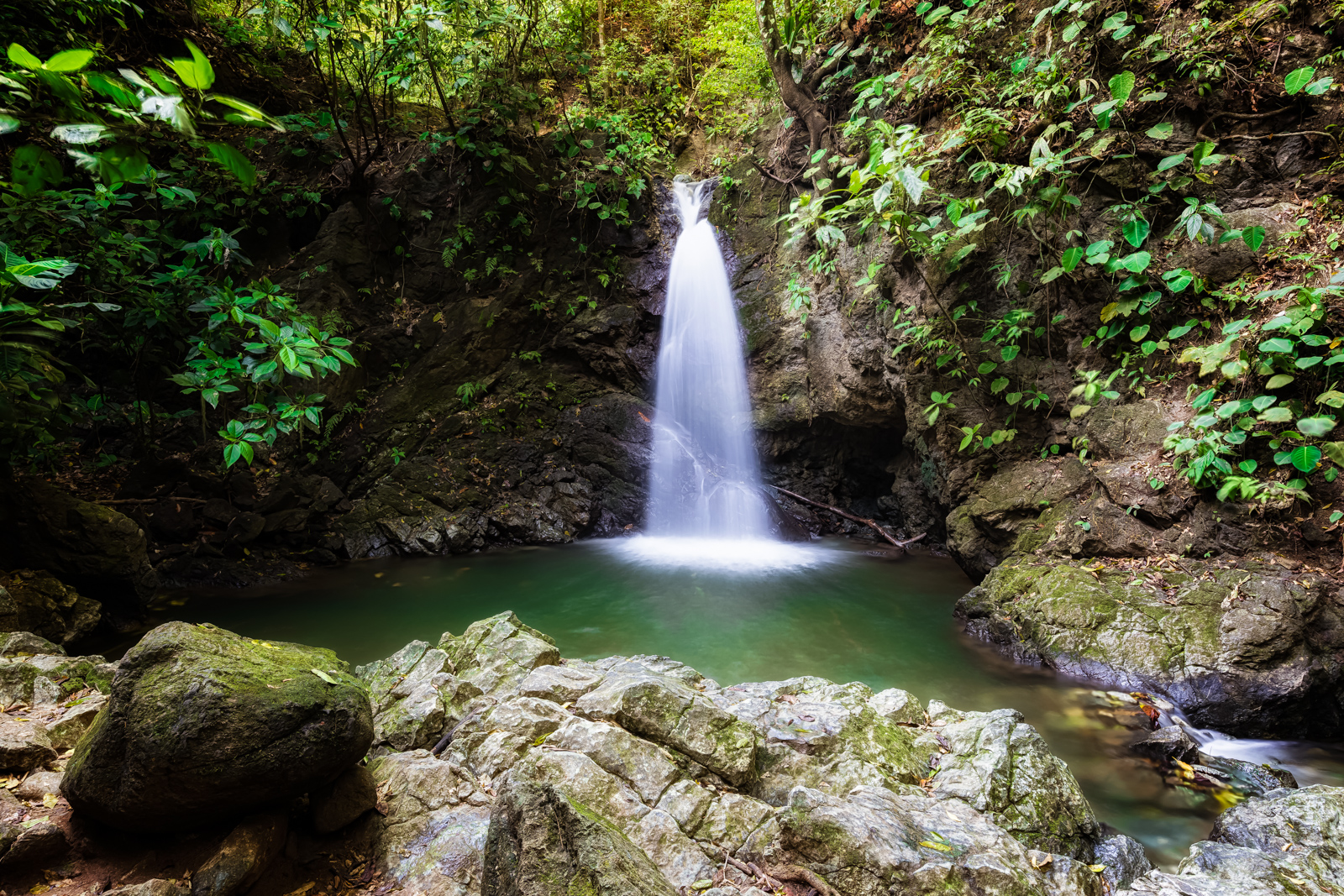
Perched on a ridge within a 1,000-acre private nature reserve on Costa Rica’s remote Osa Peninsula, Lapa Rios consists of 17 open-air bungalows with spectacular views over the Pacific Ocean and surrounding rainforest. The property runs entirely on micro hydropower generated by a nearby stream, with careful water management systems and local staff who maintain the property using traditional knowledge of the surrounding jungle.
Over 300 bird species inhabit the reserve, including the lodge’s namesake scarlet macaws. In comparison, four pristine waterfalls within hiking distance offer natural swimming pools after jungle treks that often include encounters with all four Costa Rican monkey species.
Like Travel Pug’s content? Follow us on MSN.
Tsala Treetop Lodge, South Africa
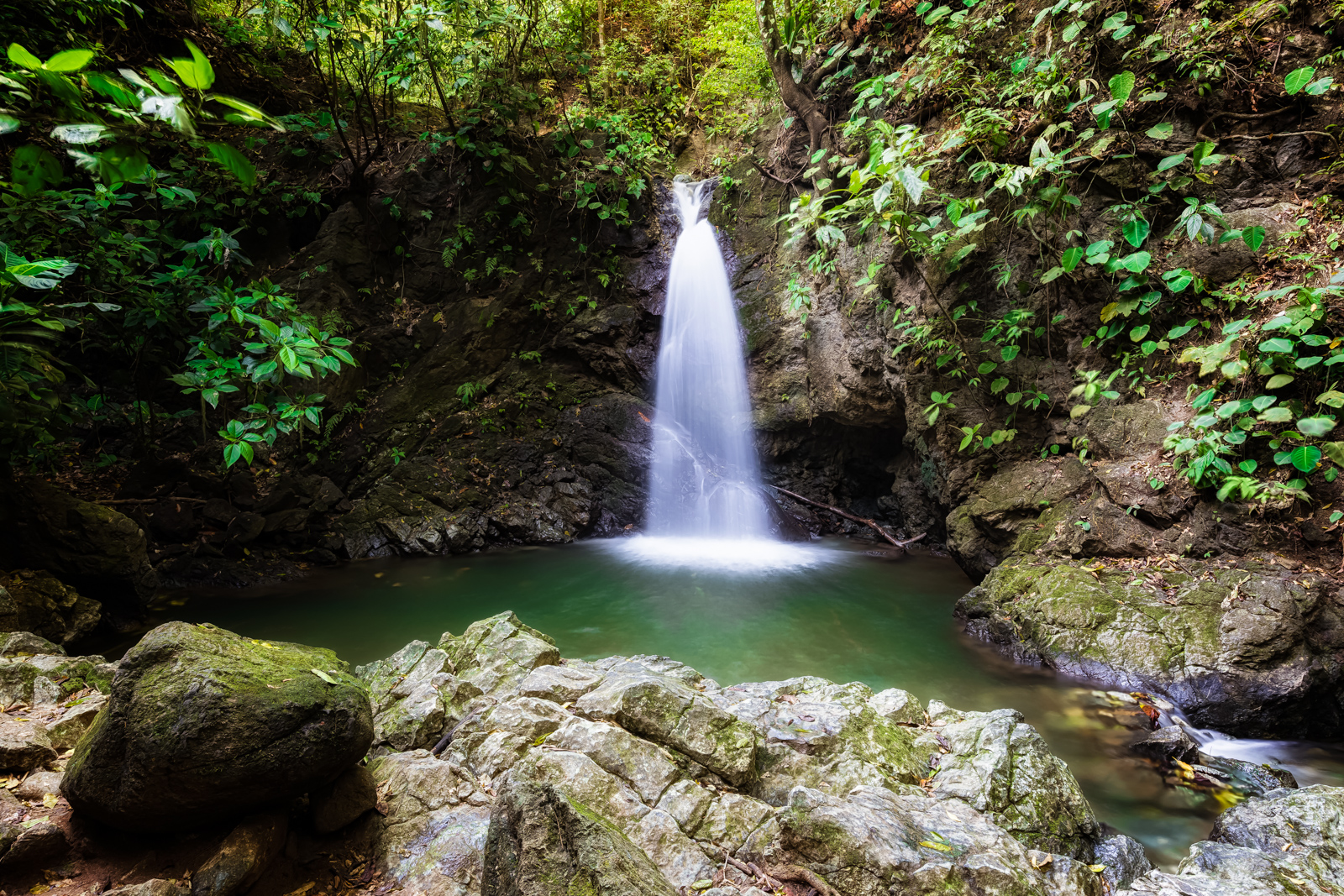
Rising above the indigenous forests of South Africa’s Garden Route, Tsala’s 16 treetop suites and villas stand on stilts among ancient trees, connected by elevated walkways that minimize ground disturbance. Floor-to-ceiling windows and private decks with infinity plunge pools create the sensation of floating among the forest canopy, while fireplaces provide warmth during cooler months.
Though less remote than some jungle retreats, the architectural harmony with the surrounding forest creates profound isolation within each unit, where the Afromontane forest ecosystem hosts sundowner calls of bushbabies and Knysna loeries flashing crimson wings between ancient yellowwood trees.
Jicaro Island Lodge, Nicaragua

Occupying an entire private island within Lake Nicaragua, this intimate nine-casita retreat lies in the shadow of Mombacho Volcano, surrounded by tropical forest. The two-story casitas were constructed entirely from trees downed by Hurricane Felix, with louvered walls allowing cross-ventilation from lake breezes and minimizing the need for fans or air conditioning.
The floating yoga deck faces the sunrise over the lake, while kayaks allow exploration of the surrounding freshwater ecosystem and nearby archipelago of 365 isletas formed by volcanic activity. Sustainability initiatives include rainwater collection systems, organic waste composting, and partnerships with local communities for food sourcing.
Nihiwatu Resort, Indonesia
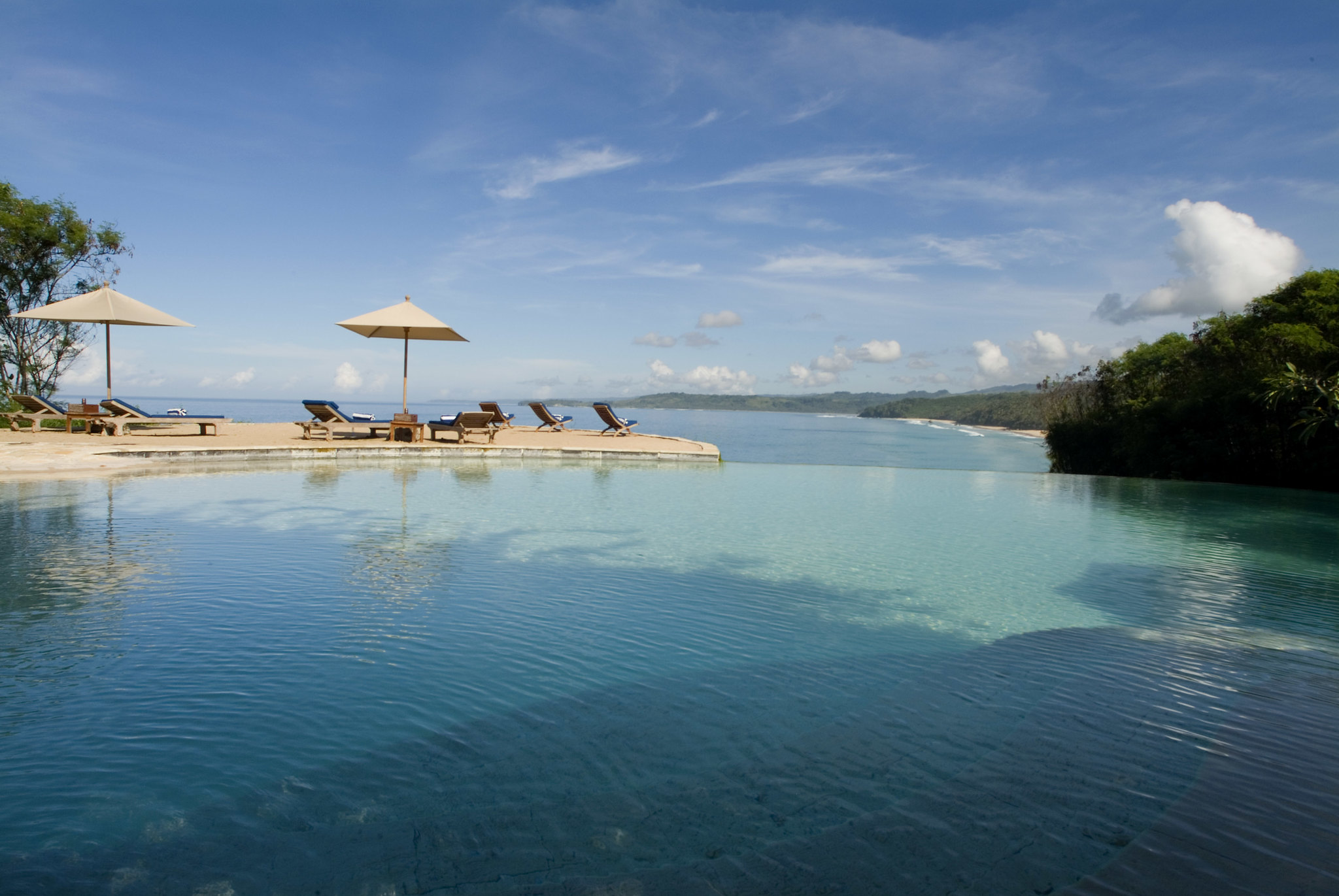
Spanning 567 acres of tropical forest and grasslands on remote Sumba Island, Nihiwatu (now called Nihi Sumba) combines a pristine jungle with 1.5 miles of private beach facing legendary surf breaks. The 27 villas feature local Sumbanese architectural elements with thatched roofs, open-air living spaces, and private pools perched above the jungle.
The property operates mostly on biofuel electricity generated from coconut oil produced on the island, while an extensive water recycling system supports organic gardens that provide 80% of the resort’s produce. Cultural experiences with local Sumbanese communities offer insights into one of Indonesia’s most intact traditional cultures.
Like Travel Pug’s content? Follow us on MSN.
Daintree Ecolodge, Australia
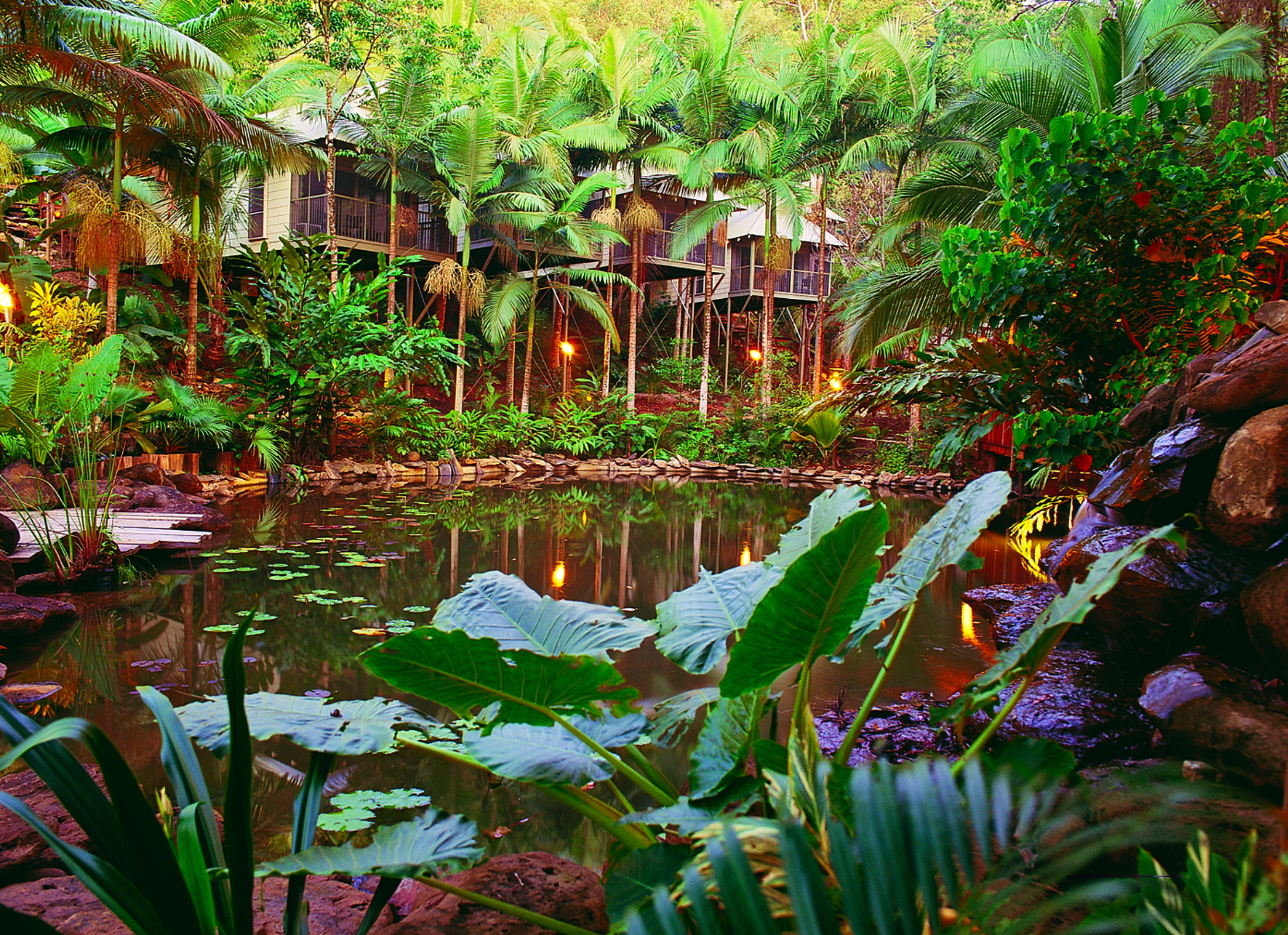
Tucked within the world’s oldest continuously surviving rainforest in tropical North Queensland, Daintree Ecolodge features 15 bayans (treehouses) built on stilts to minimize environmental impact on the 30-million-year-old ecosystem. The property operates on a combination of solar power and careful energy management, with rainwater harvesting for all needs.
The surrounding Daintree Rainforest contains plant species unchanged since the age of Gondwanan supercontinents, creating a living museum of evolutionary history accessible through guided walks focusing on bush tucker (edible native plants), aboriginal dreamtime stories, and nocturnal wildlife spotting expeditions.
Wilderness Safaris Bisate Lodge, Rwanda
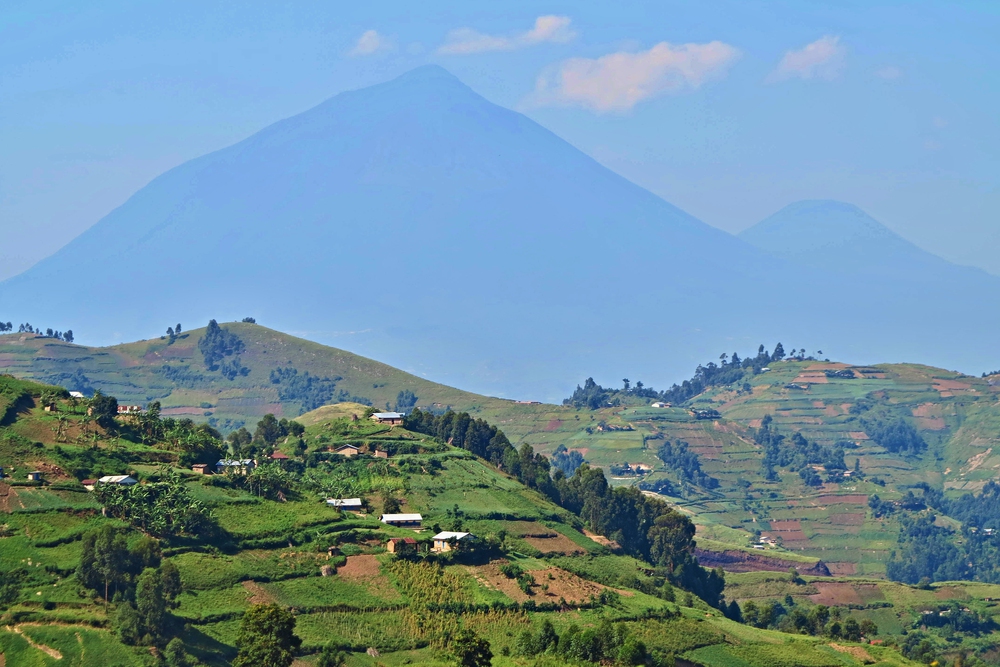
Nestled within an eroded volcanic cone adjacent to Volcanoes National Park, Bisate’s six spherical forest villas mimic traditional Rwandan design while providing views across the ancient jungle to mountain peaks housing endangered mountain gorillas. The lodge serves as both luxury accommodation and an active conservation project, with guests participating in Indigenous tree planting that has already reforested over 67 acres of previously agricultural land.
The surrounding forests contain bamboo zones, hagenia woodlands, and afro-alpine vegetation where golden monkeys, side-striped jackals, and over 200 bird species thrive in the shadow of volcanic peaks.
The Datai Langkawi, Malaysia
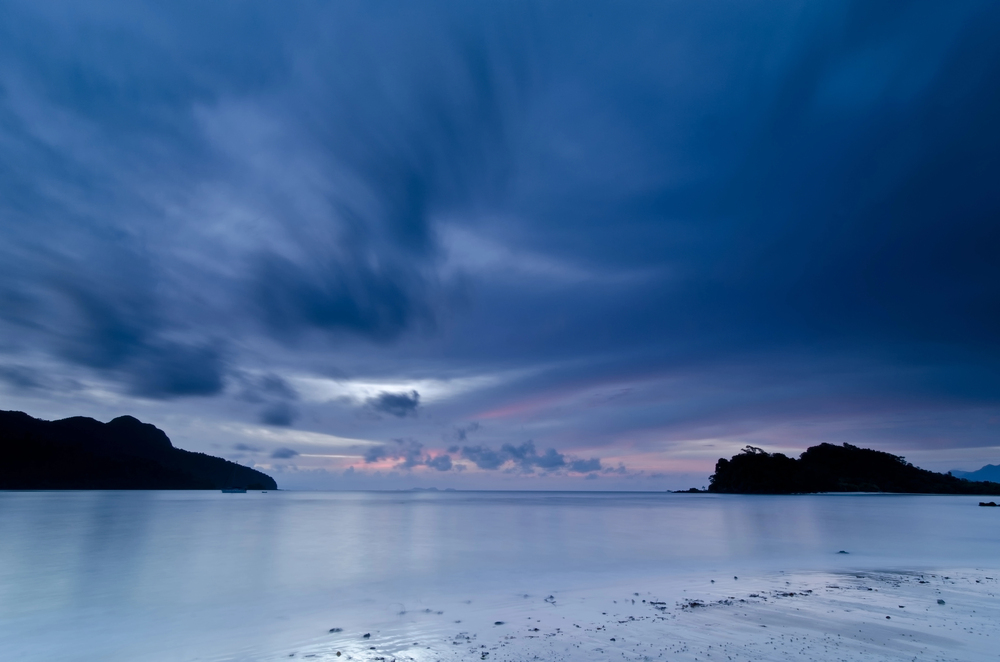
Surrounded by a 10-million-year-old rainforest on the Malaysian island of Langkawi, The Datai blends into its ancient setting with 121 rooms, suites, and villas tucked discretely beneath the forest canopy. The property employs a full-time resident naturalist who leads guests on jungle treks to discover flying lemurs, dusky leaf monkeys, and hornbills visible from elevated walkways designed to minimize wildlife disturbance.
Sustainability initiatives include a permaculture garden, a zero-waste kitchen program, and a coral nursery working to rehabilitate local reef systems. At the same time, a dedicated nature center offers insights into the surrounding jungle ecosystem that reaches from mountain ridge to pristine beach.
Like Travel Pug’s content? Follow us on MSN.
Pacaya Samiria Amazon Lodge, Peru
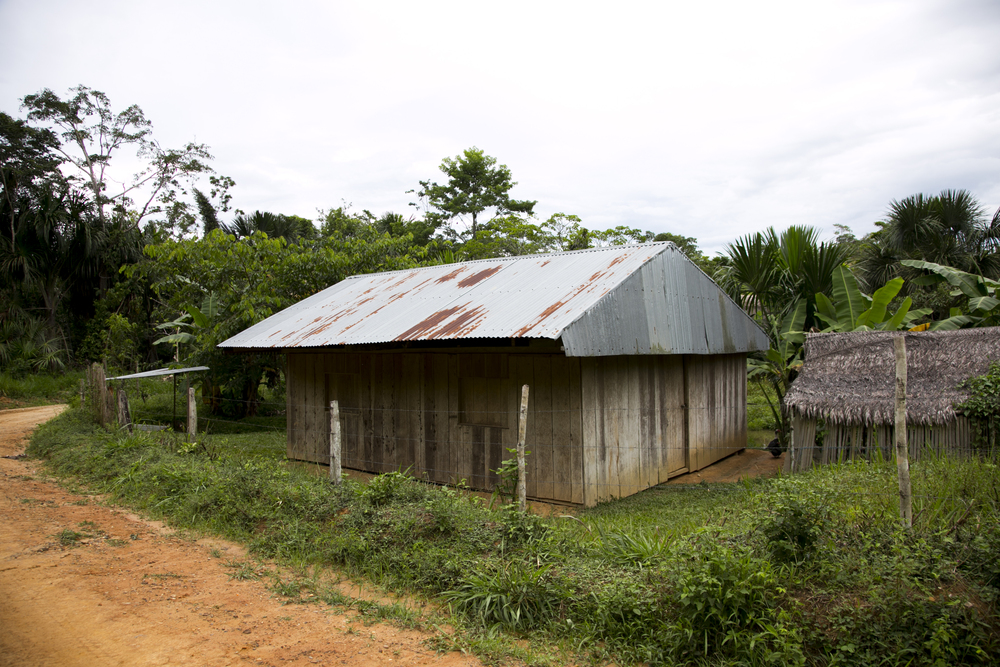
Located deep within Peru’s largest national reserve, accessible only by a four-hour boat journey up the Marañón River, this rustic lodge provides authentic immersion in the flooded forest ecosystem known locally as ‘the mirrored forest.’ The simple palm-thatched cabins stand on high stilts to accommodate seasonal flooding, with solar panels providing minimal electricity and river water filtered for essential needs.
Pink river dolphins frequently surface in front of the lodge. At the same time, guided excursions focus on nocturnal wildlife spotting, catch-and-release piranha fishing, and visits to river communities where generations have developed a sustainable relationship with the surrounding jungle.
Dera Amer, India
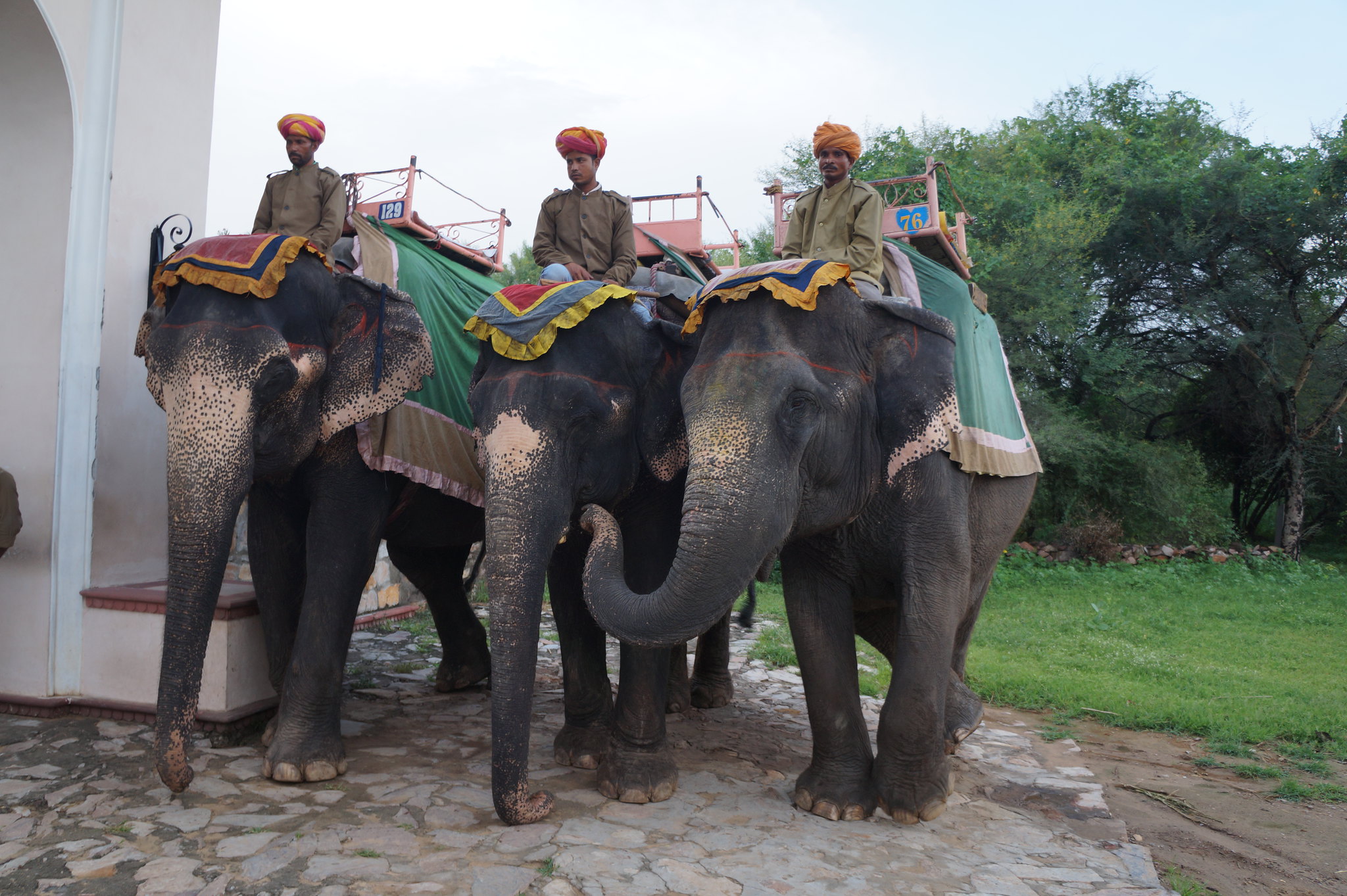
Hidden in the forested Aravalli Hills outside Jaipur, this wilderness camp centers around a tendered elephant sanctuary where former working elephants live semi-wild in 180 acres of protected forest. Just two luxury tents accommodate overnight guests, each furnished with campaign-style furniture, traditional Rajasthani textiles, and en-suite bathrooms supplied by harvested rainwater.
Without telephone or television connections, evenings feature lantern-lit dinners prepared over open flames using vegetables from the organic garden, followed by nights serenaded by peacocks and jungle creatures beneath starlit skies relatively free from light pollution.
Jalakara, India
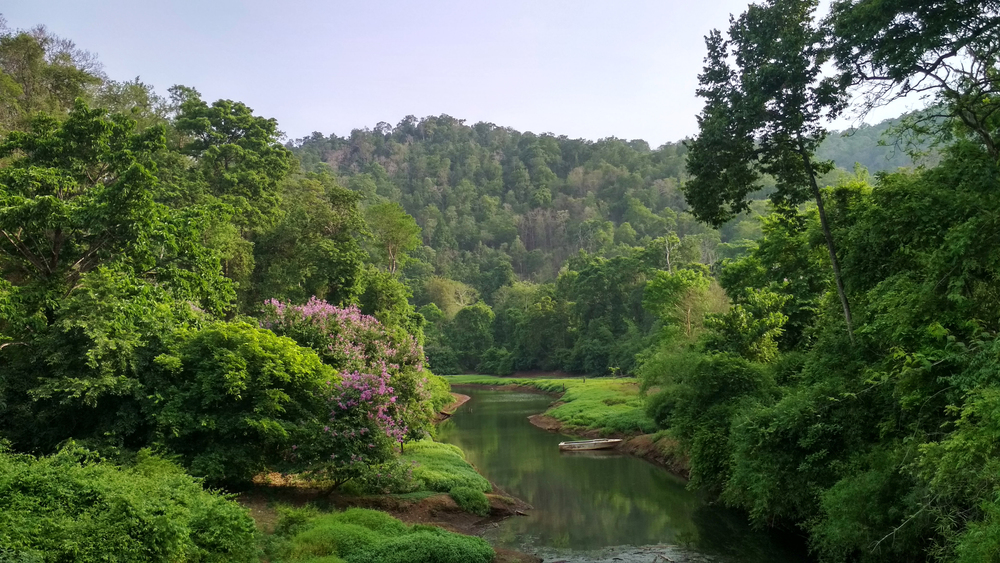
Carved from an abandoned banana and betel nut plantation in the jungles of Havelock Island in the remote Andaman archipelago, Jalakara’s seven rooms offer isolation hundreds of miles from mainland India. The island has limited infrastructure, with intermittent electricity that the property supplements with solar power and careful resource management that includes extensive rainwater harvesting.
The surrounding jungle houses giant crabs, vibrant butterflies, and endemic bird species, while nearby mangrove forests can be explored by kayak, and beaches accessible only by hiking trails through primary forest offer chances to swim with bioluminescent plankton after dark.
Like Travel Pug’s content? Follow us on MSN.
El Silencio Lodge, Costa Rica

Situated within a 500-acre private cloud forest reserve in the Bajos del Toro mountains, El Silencio offers a profound connection with one of Earth’s most magical forest ecosystems. The 16 suites feature panoramic windows framing views of the cloud-shrouded jungle and three rivers that converge on the property, forming dramatic waterfalls accessible by hiking trails maintained by local staff.
The surrounding forest serves as a vital corridor for wildlife movement between larger protected areas, supporting pumas, ocelots, emerald toucanets, and over 300 hummingbird species that guests help monitor through citizen science programs run by the lodge’s resident naturalists.
Bamurru Plains, Australia
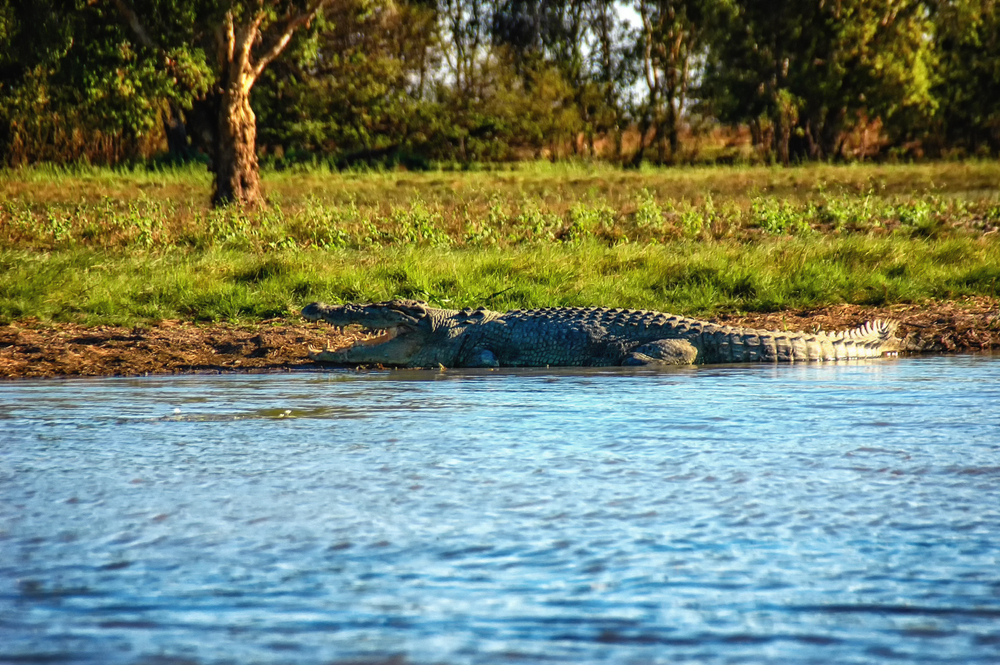
Set within the wetlands and savanna forest on the edge of Kakadu National Park in Australia’s Northern Territory, Bamurru Plains offers safari-style bungalows raised on stilts overlooking floodplains and paperbark forests. The property operates completely off-grid with solar power, providing limited electricity and carefully managing water systems in this seasonally flooded landscape.
The surrounding jungle and wetland ecosystem hosts one of Australia’s largest crocodile populations, spectacular bird concentrations including magpie geese gathering in flocks 300,000 strong, and buffalo that roam wild through forests accessible via guided wilderness drives, airboat tours, and guided walks focusing on aboriginal bushcraft.
Shinta Mani Wild, Cambodia
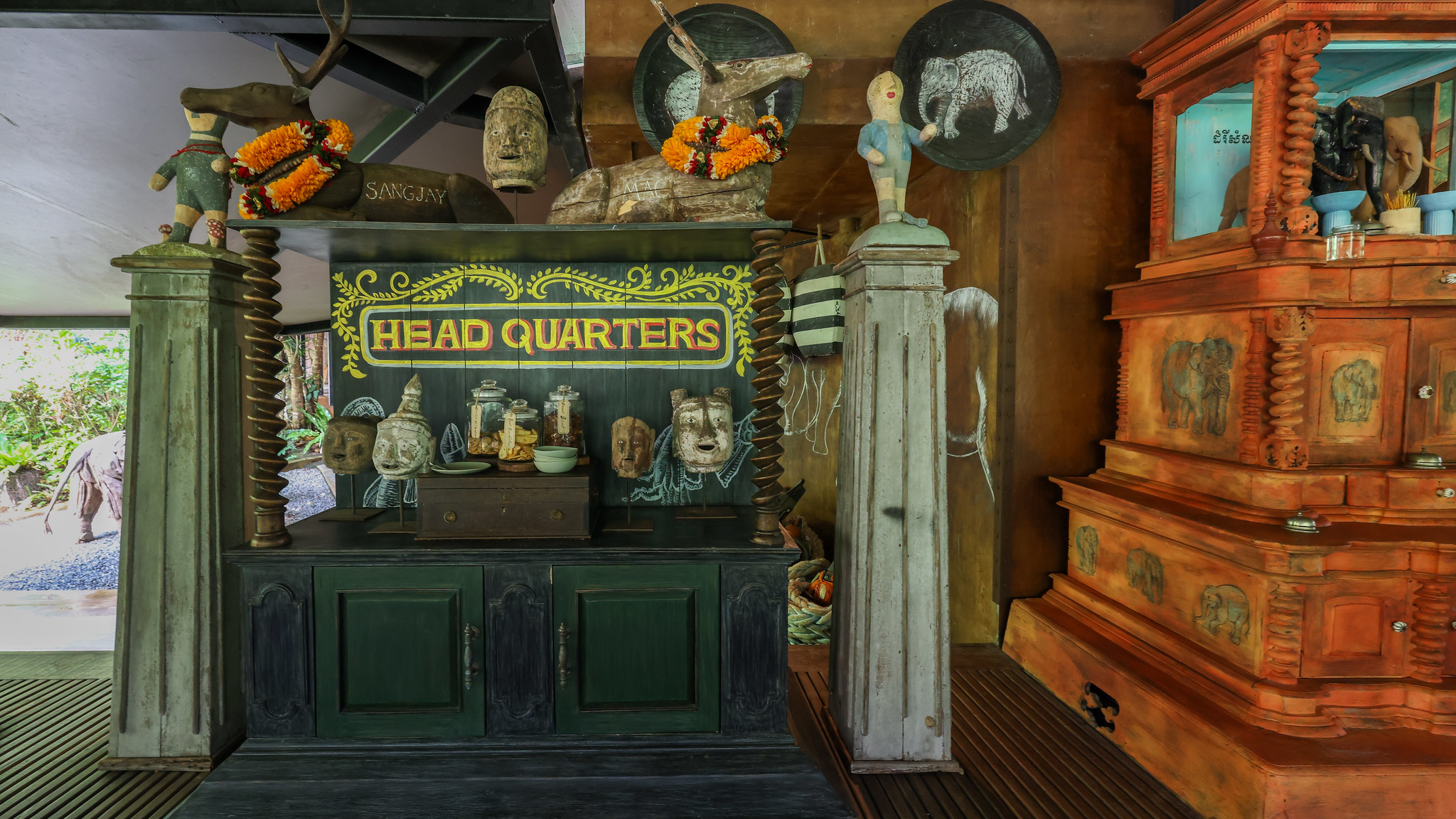
Straddling three Cambodian national parks within the Southern Cardamom Forest, this radical conservation concept created by hotel designer Bill Bensley features 15 luxury tents positioned along 1.5 miles of river and waterfalls. Guests typically arrive via a 380-yard zipline over the forest canopy and waterfall, landing directly in the bar.
The surrounding jungle houses elephants, gibbons, hornbills, and critically endangered species protected by the resort’s ranger station funded by guest stays. The property operates entirely off-grid with solar power, and the on-site naturalist team includes former poachers now employed as wildlife guardians who share unparalleled knowledge of the forest where they once hunted.
Like Travel Pug’s content? Follow us on MSN.
The Profound Forest Connection

These extraordinary jungle retreats represent a new paradigm in travel—places where luxury emerges not from opulence but from unprecedented access to Earth’s most biodiverse ecosystems. The most memorable aspect of staying in these remote sanctuaries isn’t the accommodation itself but what happens within: waking to howler monkeys announcing dawn, discovering bizarre insects on night walks, or simply absorbing the profound sensation of being surrounded by ancient trees that have stood witness to centuries.
In our hyperconnected world, true luxury increasingly means disconnection, and these jungle hideaways offer exactly that—along with the life-changing perspective that comes from temporarily becoming part of Earth’s greatest terrestrial ecosystems.
More from Travel Pug

- Cities Growing so Fast You Won’t Recognize Them in 10 Years
- 13 Destinations Where Tourists Regularly Regret Their Trip
- 20 Obscure WWII Sites Even History Buffs Don’t Know About
- 10 Under-the-Radar Mountain Towns That Are Both Affordable and Beautiful
- Remote Villages in Europe Where You Can Live for Free in Exchange for Work
Like Travel Pug’s content? Follow us on MSN.
